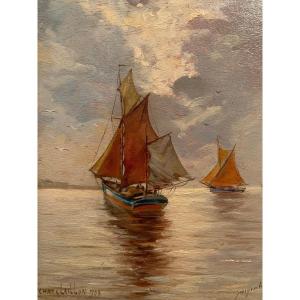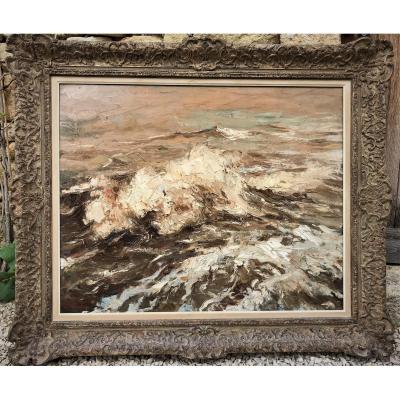In parallel with the law faculty, he assiduously attended the academic courses at the Douai School of Fine Arts, and in 1880 became a student of Pierre Billet (1837-1922). There he met the painter Adrien Demont (1851-1928), son-in-law of the famous Jules Breton (1827-1906). On the latter's advice, he presented his first painting at the Douai Salon, then in 1887 in Paris Soleil couchant à Esquerchin. A student of Adrien Demont and Virginie Demont-Breton in Wissant, he discovered the landscapes of the Opal Coast. Every summer for several years, around the Demont-Bretons, he would meet his Douai friends there: Fernand Stiévenart, Henri and Marie Duhem, Félix Planquette.
This was the time of the Wissant group, including painters from Berck including Francis Tattegrain (1852-1915). A member of the Artistes Français in 1889, Maroniez became interested in photography and invented a first hand-held camera, then a second, even simpler one, the Sphynx, which he patented in 1891. The shots taken with this portable camera were invaluable to him for capturing seaside scenes: fishermen leaving and returning, unloading fish, etc. Mobilized in 1914, he was made a knight of the Legion of Honor in July 1918.
His studio was looted and his wife deported during the occupation of the North. He died of a heart attack in Paris on December 11, 1933. He is buried in the family vault in Cambrai. His work is abundant and scattered throughout France, Europe and North America. He is estimated to have produced more than 800 paintings, to which are added thousands of studies, sketches and preparatory drawings, as well as his numerous photographic shots. These works are featured in several museums, notably in Boulogne-sur-Mer, Cambrai, Douai, Lille, collection of the Pas-de-Calais department…
Presented in a beautiful old Montparnasse frame












































 Le Magazine de PROANTIC
Le Magazine de PROANTIC TRÉSORS Magazine
TRÉSORS Magazine Rivista Artiquariato
Rivista Artiquariato